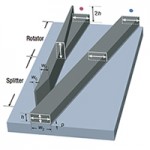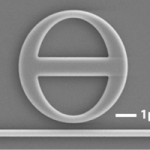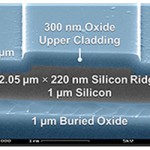Research
Research Area IV: Passive Devices - Photonic Microsystems Group
1.8.2015Research in the electromagnetic design of microphotonic elements offers potential for new nanoscale electromagnetic field manipulations, light-matter interactions, plasmonic and metamaterial effects, and sensing modalities. As a result, some of the most interesting physics extends from single devices. Example structures being developed in our group include the polarizition rotator and splitter (left figure) with the ability to rotate polarization states through structural chirality and split polarization states through mode evolution. Moreover, rigorous electromagnetic design led to tolerant structures, along with the ability to filter optical signals with high-fidelity through coupled microring-resonator filters, enabling the first demonstration of a polarization independent microphotonic circuit, a key result proving the potential of microphotonics for optical communications. Finally, through a careful manipulation of Maxwell’s equations, we discovered the only radiation-free nanophotonic cavities without a complete photonic bandgap. In addition, the group developed some first-of-its-kind microphotonic elements, including adiabatic microring resonators (middle figure) which provide electrical or mechanical contacts with little harm on the quality factors. Besides, the wafer-scale resonance variations of this type of filter are reduced by 2 times compared to conventional ring resonators. More recently, we continued to extend the performance of passive components. Through a careful design approach and fabrication strategy, our group has achieved ring-resonators with high Q (2.2e7) (right figure), which representing a new record low loss silicon (0.027dB/cm). In all of the cases, rigorous electromagnetic design, has, and will continue to play a pivotal role in the research of my group. Much as the transistor drove microelectronics, microphotonic elements will drive new circuits, systems, and networks.




